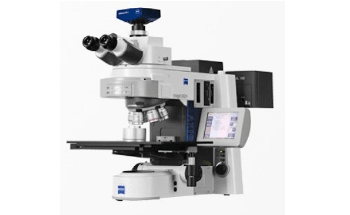
Carl Zeiss Microscopy Usa Trial And Pharmaceutical
Find, read and cite all the.1846–Carl Zeiss (1816-1888) establishes a workshop in Jena to make and sell optical and fine mechanical apparatus. In addition, Carl Zeiss Microscopy markets microscopy systems for the clinical market, as well as optical sensor systems for industrial and pharmaceutical applications.PDF of a paper presented at Microscopy and Microanalysis 2013 in Indianapolis, Indiana, USA, August 4 August 8, 2013. Carl Zeiss Microscopy, LLC, offers microscopy solutions and systems for research, routine, and industrial applications.
View our wide selection of products for scientific research and.Carl Zeiss biology microscopes. Optical elements were configured by trial and error rather in accordance with scientific theory.Your source for innovative, indispensable lab equipment, lab supplies, and services. Staffs are about 90 in Carl Zeiss 1847–microscope production begins, first with simple microscopes and then compound microscopes. Was established in 1986 and has 5 Business divisions: MED (Medial Devices), IMT (Industrial Metrology), MICRO (Microscopy), SMS (Semiconductor Metrology Systems), NTS (Nano Technology Systems). About Carl Zeiss Korea Carl Zeiss Co., Ltd. The full name of the firm would become Carl Zeiss Optische Werkstätte, Jena (Carl Zeiss Optical Works, Jena).The Carl Zeiss business groups hold leading positions in their markets.
Microscope heads.1866–Zeiss persuades Ernst Abbe (1840-1905), a lecturer in physics at the University of Jena, to develop a mathematical foundation for designing microscope objectives. Inverted (3) upright (2) Submit. For biology (9) laboratory (9) for life sciences applications.
The company later changed its name to Jenaer Glaswerke Schott & Genossen. Otto Schott (1851-1935), a chemist specializing in glass manufacturing, sets up a workshop in Jena in 1882.1884– Otto Schott, Ernst Abbe, Carl Zeiss, and Roderich Zeiss establish Glastechnisches Laboratorium Schott & Genossen (Schott and Associates Glass Technology Laboratory). Better optics requires not just better theory but better glass. Production increases at the workshop, and larger facilities are found on the outskirts of Jena in the early 1880s. Abbe becomes director of research at the Carl Zeiss Optische Werkstätte.Coherent is a leading global supplier of lasers and photonics technology used in a wide range of materials processing, scientific and other applications.1869–Zeiss and Abbe patent a device to illuminate objects under a microscope.1872–Abbe's study of the limits on sharp imaging caused by the wave nature of light leads to his formulation of the "Abbe sine condition." Abbe's theory of image formation becomes the basis for the design of high performance optics.1880s–The Zeiss microscopes built using Abbe's theory are widely praised.
The production of Zeiss products in the U.S. Roderich Zeiss later did the same, and in 1923 Schott added his shares in the glass works to the foundation.1890s–The Zeiss Optical Works expands its catalogue of instruments to include refractometers, spectrometers, photo-optical instruments, rangefinders, telescopes, and binoculars.1892-Bausch and Lomb of Rochester, New York, becomes the sole American company licensed to make Zeiss "anastigmats" and other lenses. The Stiftung manages the various Zeiss concerns and research activities, including the Carl Zeiss Optische Werkstätte, Jena and the Jenaer Glaswerke Schott & Genossen.1891–Ernst Abbe transferred his shares in the Zeiss Optische Werkstätte (Zeiss Optical Works) and the Schott Glaswerke (Schott Glass Works) to the Carl-Zeiss-Stiftung. Another Schott & Genossen Glaswerke is set up in Mainz.1889–Carl-Zeiss-Stiftung (loosely translated as Carl Zeiss Foundation) is set up by Ernst Abbe one year after the death of Carl Zeiss.


Initially it sold just precision mechanical and optical equipment.1953-Carl Zeiss takes over Zeiss-Opton in October 1953. In New York imports products from both the Zeiss Jena and Zeiss Oberkochen factories.1949–Heidenheim becomes the legal domicile of the Carl-Zeiss-Stiftung.1951–The firm Carl Zeiss is entered into the commercial register of Heidenheim district court. The new logo for Zeiss-Opton products is "ZEISS / OPTON" within the borders of the achromatic doublet lens.The partition of Germany also splits Zeiss Ikon into East and West divisions.Carl Zeiss, Inc. West German Zeiss-Opton products are labeled Opton for sale in Eastern bloc countries. The Eastern company continues to use the logo of "CARL ZEISS / JENA" within the borders of an achromatic doublet lens. Both factories are taken over by the East German state and become "people's own enterprises." The new company names are VEB Carl Zeiss Jena and VEB Jenaer Glaswerk.East German Zeiss products are labeled Carl Zeiss Jena for sale in Western bloc countries.
The enterprises declare their intention to fuse under the umbrella of a Carl Zeiss Foundation that would be legally domiciled in both Jena and Heidenheim. Its new trademark is a bold logotype, "ZEISS."1990–The political change in the German Democratic Republic also spells a change in the relations between the Zeiss enterprises in the East and West. Carl Zeiss (Oberkochen) is given the right to sell products in the West under the name of Carl Zeiss.



 0 kommentar(er)
0 kommentar(er)
